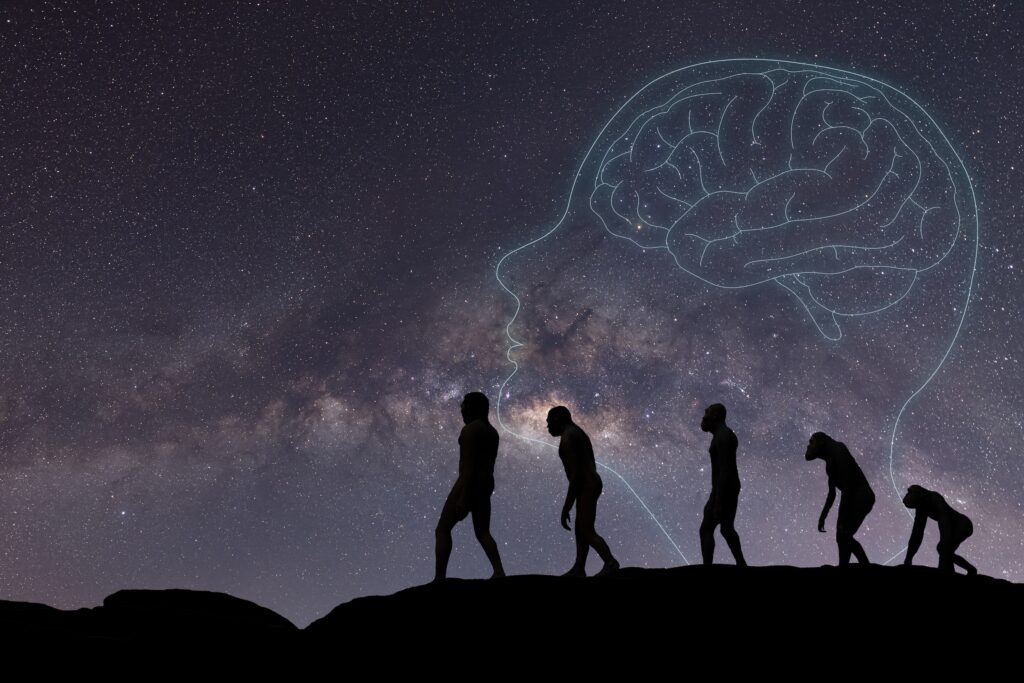Inducing the mental creation of experiential realities
Reading | Psychology | 2021-08-29

Can people—even those ostensibly not hypnotizable—be coaxed into creating entire virtual realities that they then take for facts? Can the same techniques be used to alter our memories of the past? If so, is this significant for our understanding of what reality—the real reality—actually is? Psychologists Prof. Petrenko and Dr. Kucherenko share astonishing results produced by Russian clinical and experimental psychology, which answer these questions in the affirmative.
(Editors’ note: the authors use the word ‘unconscious’ in the Jungian sense: that of psychic realm that lacks higher-order mental functions, such as meta-cognition, but which may nonetheless still be experiential in essence.)
In our studies of altered states of cognition and the unconscious, hypnosis techniques were used to study the effect of emotions on categorization processes [5], the relationship between emotional states and color preferences [6], the ‘semantic blind spot’ phenomenon—that is, the neglect of entire semantic areas during conscious processing due to a hypnotic prohibition of seeing a certain object [7]—and meditation [8], in the laboratory of communicative psychology and psycho-semantics of the Faculty of Psychology, Moscow State University. Moreover, the dynamics of the patient’s personality transformation was studied during the treatment of patients for alcoholism [9]. Many years of research work resulted in the development of a range of suggestive psychological techniques (suggestion methods) that enable various types of work with the unconscious.
Our sensorimotor psychosynthesis technique is a method for immersing a person into a trance state and constructing images that define the patient’s emotional state while in trance and direct the patient’s imagination and behavior. The method includes elements of shamanic and meditative practices, M. Erikson’s non-directive hypnosis [10], neurolinguistic programming [11], and implies the formation of an integral intermodal image of a situation into which the patient is immersed with assistance from a suggester (a therapist, a researcher, or a coach).
The subject continually reports on the focus of their attention, as well as their visual, auditory and other sensory experiences, to the suggester. The subject’s replies to the suggester’s questions provide an opportunity to regulate the visual, auditory and kinesthetic components of the images formed by the suggestion, and the use of synesthesia enables the construction of multimodal images. The active dialogue between the suggester and the patient is the key feature of the sensorimotor psychosynthesis method that distinguishes this method from directive hypnosis, self-hypnosis and other monologue techniques. Each patient in an altered state of consciousness constructs their own reality, which corresponds to their desires and motives, and they exist in it. Therefore, the dialog with the patient is necessary for understanding their state, whereas classical hypnosis usually involves a monologue of suggestion by the therapist. The suggester uses the feedback provided by a dialog to direct the patient’s imagination according to the actual research or therapeutic task. The patient can be immersed into an imaginary situation, such as a spaceflight, or recall events from the past, including early childhood, and even experience an unreal transformation into a powerful animal.
Immersion in a state of trance is of key importance, as the directed imaginative activity is performed during this state and both the patient and the therapist are in a trance. The trance state of the suggester can be defined as controlled trance that induces trance in the patient. The empathic processes of emotional contagion described by H. Bergson [12]—that is, the direct sensing of a living creature’s emotions by another living creature—takes place. These processes define the conceptual core of the sensorimotor psychosynthesis method. The suggester senses the patient’s psycho-emotional state and cooperates with the patient to construct predefined emotions in the latter.
Animals and humans are capable of identifying the state of other creatures from purely external manifestations and even sensing it directly, by identifying with the carriers of these states. S.S. Stepanov, an historian of psychology, describes an illustrative example observed by F. Galton, the founder of psychometry:
Sir Francis performed an original experiment once. Before his daily walk in the streets of London, he made himself believe that he was an abhorrent person hated by everyone in England. He focused on this statement for several minutes, this being equivalent to self-hypnosis, and went for a walk as usual. However, the situation only seemed typical. In fact, the following happened. Francis noticed that scornful and disgusted glances of passers-by followed his every step. Many turned away from him, and he was rudely cursed several times. A lumper in the port pushed the scientist with an elbow when passing by, so that Galton fell into a pool of mud. Even animals seemed to assume a hostile attitude. Galton was passing by a horse in harness, and the horse kicked him in the leg, so that the scientist fell down again. Galton tried to appeal to the onlookers’ sympathy but was amazed to hear the people take the animal’s side. Galton hurried home, lest his experiment with imagination lead to even worse consequences. This true story is described in many psychology textbooks, and it leads to two important conclusions. A human is defined by what he or she thinks of him or herself. It is not necessary to inform others of one’s self-esteem and state of mind. They will feel it anyway [15, p. 15].
Every human who ever interacted with animals has experienced the phenomenon described by Galton. Try to extend your hand to pat a dog at a moment when you fear being bitten: the dog will apparently feel your state and growl at you. Humans largely lose their innate capacity for empathic projection (even though it is still manifested in childhood), apparently due to individualization, and let their consciousness guide them when they try to understand others. However, some adults still possess this capacity, which enables them, for instance, to give a diagnosis instantaneously and recommend a certain treatment. Some possess this capacity from birth, whereas others acquire it after a near-death experience, the so-called shaman sickness, or some other strong physical impact (such as being struck by lightning).
We organized several ethno-psychological expeditions to Buryatia, Tuva and Chukotka, interviewed the local shamans and acquired valuable experience, which allows us to make the following statement: a human’s empathy barriers are shifted during the time of the shaman sickness essential for getting shaman status. A normal person apparently possesses some protective thresholds (similar to sensation thresholds in psychophysiology); otherwise, this person would constantly feel the suffering and emotions of many other people and even animals, and this would be a too-heavy load detrimental to evolutionary adaptation (several powerful shamans known to the authors died relatively young, this being indicative of the heavy load on an empath). These thresholds can probably be lowered after exposure to extreme psychophysiological conditions, and thus people become more sensitive to the emotions of others.
The term ‘trance,’ derived from the Latin verb ‘transire’ (to overstep boundaries), describes a number of diverse altered states of consciousness (ASCs), related to shifting the attention focus from perception and recognition of the external world to the subject’s own internal state. An appropriate typology of the diverse trance states has not yet been developed in psychological research. Trance states include immersion into fantasies; ASC associated with hypnotic suggestion; the creative ecstasy of a painter, poet, musician, or scientist; religious ecstasy perceived as a union with the divine; and the pathological states of consciousness caused by fever, poisoning or alcohol and drug use. Notwithstanding the diversity of trance states, they can apparently be classified with regard to at least two sets of features. The first one is the degree of dis-objectification of the image of the world, the removal of intentionality manifested as the transition from objective forms to internal psychological states. This is characterized by the absence of subject–object contraposition. The second one is the person’s capacity to transcend the boundaries of the individual ego and rise to transcendent levels of perception, the levels of divine or cosmic consciousness. This state is sometimes termed divine inspiration or ‘being in the flow.’ The dis-objectification of existence is called the ‘non-duality’ feeling or unity with the world in Buddhist literature. A range of major characteristics of ASCs can be identified and used to consider these states as an integral phenomenon [16, 17, 18, 19, 20, 21, 22].
Our sensorimotor synthesis technique aims for the integration of the activity of the sensory systems according to the structure and logic of the situation being modeled. For instance, the formation of an image of an illustrated magazine in the subject’s mind can be started from tactile sensations: the touch of the glossy paper, the weight of the magazine, the cool pages. The perceptive system that fills the image with components of the visual modality is activated afterwards. The smell of the printing ink and the sound from the shuffling of pages can be included in the image.
The sensorimotor psychosynthesis process does not require a ‘hypnotic inhibition of the brain’ and is not accompanied by a hypnotic sleep state. Therefore, the subject is in a more active state than a subject of classical hypnosis. In contrast to hypnosis, which exploits the hypnotizability of the individual, the sensorimotor psychosynthesis technique does not require this property. Effects similar to those of deep hypnosis can be attained even in poorly hypnotizable individuals. The method can be used in psychological practice and experimental work, in psycho-correction and in psychotherapy; it enables experimental modeling of human behavior in various real-life situations and the formation of susceptibility to hypnosis in poorly hypnotizable persons.
Use of the sensorimotor psychosynthesis technique in medical psychology enables the elimination of obsessions or unhealthy habits, including alcoholism and drug addiction, mobilization of the organism’s reserves during training for sports competitions, or improvement of the patient’s emotional state and immune system activation
V.V. Kucherenko, one of the authors of the present paper, works with patients suffering from a variety of diseases. He works in cooperation with physicians to create a favorable emotional state of the patient, so that the organism’s resistance to the disease increases.
Sports is another area of practical application for the sensorimotor psychosynthesis method. Kucherenko used to participate in coaching work for the Russian bobsledding team. The team members imagined moving through the track while in a trance state, and then reproduced this state during international competitions. This allowed for mobilization without the need for any doping, prevented mistakes during the competitions, and ensured good results.
Use of memories in crime investigations is another area in which the sensorimotor psychosynthesis can be used. The super-memory phenomenon associated with hypnosis has been reported in a number of publications. Memory activation in a potential witness of a crime allows for retrieval of information on specific details of past events. For instance, one of the investigations had the aim of identifying the license plate number and distinctive features of the criminals’ car. The detectives found a truck driver who could have seen that particular car on the road on the day when the crime was committed. Kucherenko gradually put this potential witness into deepening trance and asked him to remember everything related to his driving on that day. It was hard to see the license plate of the car in the twilight, and the driver was asked to ‘relive’ this moment several times, so that he would notice new details and see familiar details more distinctly every time. The license plate was seen at an optimal angle as the car was passing by, so the subject was asked to ‘take a still image’ and then ‘shuffle’ images slowly, a little forward and a little backward, and finally ‘hold’ the ‘photograph’ obtained in front of himself to see the license plate clearly. This information was successfully used to find the car and arrest the criminals.
V.V. Nurkova and D.A. Vasilenko studied the possibility of transforming the images of the past and demonstrated the efficiency of the sensorimotor psychosynthesis method for the correction of autobiographic memory [29]. The psychotherapy techniques developed by Kucherenko were used to immerse the patients into a trance and transform the past [30, 31]. This use of the sensorimotor psychosynthesis method provides a powerful means for manipulating a personality and for the transformation of memories. The practice of rewriting history may hardly stop at the level of an individual. Dystopias such as the all-searching eye of the Orwellian Big Brother will then seem as innocent as child’s play.
Nowadays, the development of psychological techniques is transforming psychology from a descriptive and explanatory science to one that is actively modifying its own objects; a science at the cutting edge of human evolution; a science that can secure the humanization of humankind or undermine our very existence. In addition to Kucherenko’s sensorimotor psychosynthesis method, the human personality can be substantially modified by Eriksonian hypnosis, various techniques of working with autobiographic memory and the collective unconscious, transpersonal psychology approaches that involve immersion into ASCs (S. Grof, A. Mindell, R. Frager, C. Wilbur, and others), and coaching sessions similar to those proposed by C. Rogers [34] and A.F. Alekseichik [35]. The minimization of risks is essential, and we assume that it can be ensured by the implementation of the techno-humanitarian balance principle proposed by A.P. Nazaretyan [36]: the development of technologies should be necessarily controlled or restricted (in the absence of a more suitable term) by newly emerging ethical and moral norms. In this case, one can hope that the sensorimotor psychosynthesis method will remain another powerful tool for positive modification of the human psyche.
*The complete version of this essay was published in the Herald of The Russian Academy of Sciences, Vol. 89, No. 1, 2019.
REFERENCES
- F. Petrenko and A. P. Suprun, “Methodological manifesto of psychosemantics,” Psikhol. Zh. 37 ( 3), 5– 14 (2016).
- V. Belokurov, O. D. Timofeevskaya, and O. A. Khrustalev, Quantum Teleportation—a Usual Miracle (Regulyarnaya I Khaoticheskaya Dinamika, Izhevsk, 2000) [in Russian].
- G. Jung, Two Essays on Analytical Psychology (Princeton Univ. Press, Princeton, 1989).
- F. Petrenko, V. V. Kucherenko, and A. V. Rossokhin, “The altered state of consciousness as a psychological reality,” Zh. Praktikuyushchego Psikhologa, No. 4, 81–93 (1998).
- F. Petrenko, V. V. Kucherenko, and A. A. Nistratov, “The influence of an affect on the semantic organization of meanings,” in Text As a Psychological Reality (Institut Yazykoznaniya AN SSSR, Moscow, 1982), pp.60–80 [in Russian].
- F. Petrenko and V. V. Kucherenko, “Interrelation between an emotion and a color,” Vestn. Mosk. Univ., Ser. 14: Psikhol., No. 6, 70–72 (1988).
- F. Petrenko, “Psychology of the consciousness revisited,” Vopr. Filos., No. 11, 57–74 (2010).
- F. Petrenko and V. V. Kucherenko, “Meditation as a form of nonmediated cognition,” Vopr. Filos., No. 8, 83–101 (2008).
- F. Petrenko, V. V. Kucherenko, and A. P. Vyal’ba, “The psychosemantics of altered states of the consciousness (a case study of the hypnotherapy of alcoholism),” Psikhol. Zh. 27 ( 5), 16–27 (2006).
- H. Erikson, Hypnotic Realities: The Introduction of Clinical Hypnosis and Forms of Indirect Suggestion, Ed. by E. L. Rossi and S. I. Rossi (Irvington, New York, 1976) [in Russian].
- Bandler and J. Grinder, Frogs into Princes: Neuro Linguistic Programming (Real People Press, Moab, Utah, 1979).
- Bergson, Creative Evolution (Henry Holt, New York, 1911).
- F. Petrenko and A. P. Suprun, “Methodology of psychosemantics in the context of the philosophy of postnonclassical rationality and quantum physics,” Herald Russ. Acad. Sci. 85 ( 5), 434–442 (2015).
- F. Petrenko and A. P. Suprun, “Classical and quantum physics in the language of consciousness and unconsciousness as postnonclassical rationality,” Vopr. Filos., No. 9, 76–90 (2014).
- S. Stepanov, Psychology of Persons (Eksmo-Press, Moscow, 2001) [in Russian].
- V. Ovchinnikova, E. E. Nasinovskaya, and N. G. Itkin, Hypnosis in the Experimental Study of Personality (Izd. Mosk. Gos. Univ., Moscow, 1989) [in Russian].
- A. Gostev, The Psychology of a Secondary Image (Institut Psikhologii RAN, Moscow, 2007) [in Russian].
- P. Grimak, Reserves of the Human Psyche (Politizdat, Moscow, 1989) [in Russian].
- Grof, Psychology of the Future: Lessons from Modern Consciousness Research (State Univ. of New York Press, Albany, 2000).
- T. Tart, Altered States of Consciousness: A Book of Readings (John Wiley and Sons, New York, 1969)
- Dittrich, “Standardized psychometric assessment of altered states of consciousness (ASCs) in humans,” Pharmacopsychiatry 31 ( 7), 80–84 (1998).
- V. Kozlov and Yu. A. Bubeev, The Alteration of the State of Consciousness: Psychology and Physiology (Nauka, Moscow, 1997) [in Russian].
- G. Anan’ev, The Psychology of Sensory Perception (Nauka, Moscow, 2001) [in Russian].
- F. Petrenko, Fundamentals of Psychosemantics (Izd. Mosk. Gos. Univ., Moscow, 2010) [in Russian].
- F. Petrenko and A. P. Suprun, Methodological Intersections between the Psychosemantics of Consciousness and Quantum Physics (Nestor-Istoriya, Moscow, 2017) [in Russian].
- R. Luriya, A Small Book about Big Memory (Izd. Mosk. Gos, Univ., Moscow, 1968) [in Russian].
- N. Leont’ev, “Psychology of the image,” Vestn. Mosk. Gos. Univ, Ser. 14: Psikhol., No. 2, 3–12 (1979).
- K. Tikhomirov, V. L. Raikov, and N. A. Berezanskaya, “On an approach to the study of thinking as an activity of a personality,” in Psychological Studies on Creative Activity (Nauka, Moscow, 1975), pp. 140–205 [in Russian].
- V. Nurkova and D. A. Vasilenko, “Formation of a variative repertory of self-defining memories as a tool to develop self-identity,” Vestn. Ross. Gos. Gumanitar. Univ., Ser: Psikhol. Ped. Obr., No. 18, 11–30 (2013).
- A. Vasilenko, Autobiographical Memory As a Constructive Process, Cand. Sci. (Philol.) Dissertation (Moscow State Univ., Moscow, 2017) [in Russian].
- V. Nurkova, “Credulous memory: How information incorporates into the system of autobiographical knowledge,” in Cognitive Studies: A Collection of Research Papers, Ed. by V. D. Solov’ev and T. V. Chernigovskaya (Institut Psikhologii RAN, Moscow, 2008) [in Russian], vol. 2, pp. 87–102.
- E. Hyman, T. H. Husband, and F. J. Billings, “False memories of childhood experiences,” Appl. Cognitive Psychol. 9 ( 3), 181–197 (1995).
- A. Wade, S. J. Sharman, M. Garry, et al. “False claims about false memory research,” Conscious Cogn. 16 (1), 18–28 (2007).
- R. Rogers, On Becoming a Person: A Therapist’s View of Psychotherapy (Houghton Mifflin, New York, 1961).
- E. Alekseichik, Psychotherapy of Life (Institut Gumanisticheskoi I Ekzistentsial’noi Psikhologii, Vilnius, 2008) [in Russian].
- A. P. Nazaretyan, Nonlinear Future (Izd. MBA, Moscow, 2013) [in Russian].

Essentia Foundation communicates, in an accessible but rigorous manner, the latest results in science and philosophy that point to the mental nature of reality. We are committed to strict, academic-level curation of the material we publish.
Recently published
Reading
Essays
Seeing
Videos
Let us build the future of our culture together
Essentia Foundation is a registered non-profit committed to making its content as accessible as possible. Therefore, we depend on contributions from people like you to continue to do our work. There are many ways to contribute.















